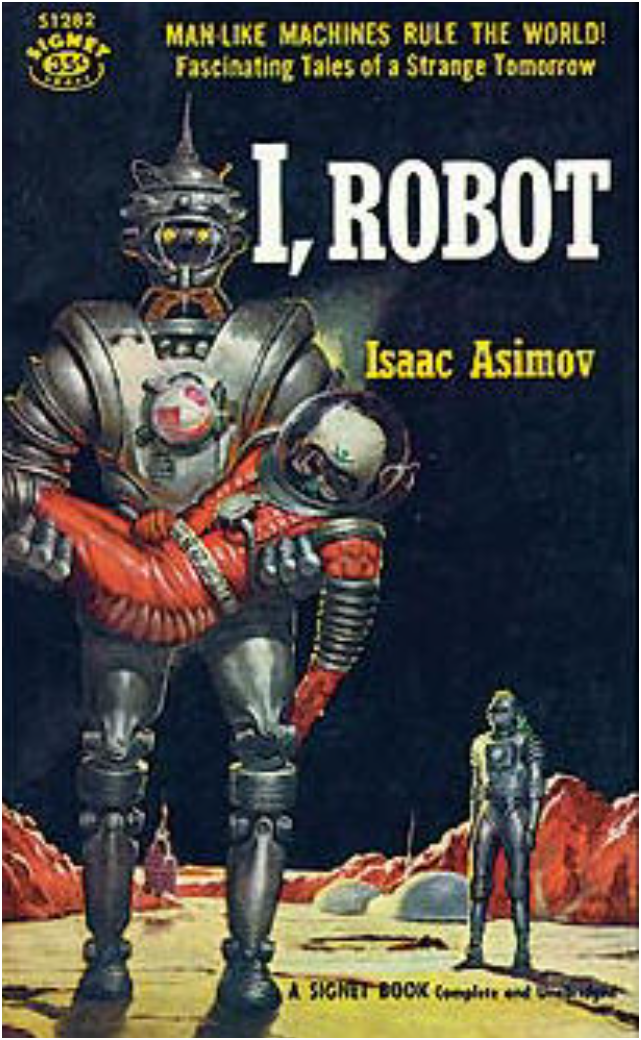Isaac Asimov, one of the most influential science fiction writers of the 20th century, made significant contributions to literature and science through his imaginative works and visionary ideas. Among his most enduring legacies are the Three Laws of Robotics, which have shaped the way we think about artificial intelligence and robotics.
The Three Laws of Robotics
Introduced in Asimov's 1942 short story "Runaround," part of the collection *I, Robot*, the Three Laws of Robotics are designed to ensure that robots operate safely and ethically in human society. These laws are as follows:
A robot may not injure a human being or, through inaction, allow a human being to come to harm.
A robot must obey the orders given it by human beings except where such orders would conflict with the First Law.
A robot must protect its own existence as long as such protection does not conflict with the First or Second Law.

These laws provided a framework for the ethical behavior of robots and have been widely referenced in both fiction and real-world discussions about artificial intelligence and robotics.
Impact on Science Fiction and Real-World Robotics
Asimov's laws became a fundamental part of his robot stories, exploring the complex interactions between humans and robots. They served as a basis for numerous plots, revealing the potential conflicts and dilemmas that could arise from such interactions. These stories not only entertained readers but also provoked thoughtful considerations about the role of robots in society.
In the real world, Asimov's laws have influenced researchers, ethicists, and policymakers as they navigate the challenges of integrating robots and AI into daily life. While actual robots and AI systems today are not programmed with these specific laws, the principles behind them—safety, obedience, and self-preservation—inform the guidelines and ethical standards for developing autonomous systems.
Relevance in Modern Robotics and AI
As robotics and AI technology continue to advance, the relevance of Asimov's Three Laws of Robotics remains significant. Autonomous vehicles, drones, medical robots, and AI-driven personal assistants are becoming increasingly common, raising questions about safety, control, and ethical use. The spirit of Asimov's laws is evident in ongoing efforts to create AI systems that prioritize human safety and ethical considerations.
Challenges and Limitations
Despite their influence, Asimov's laws also highlight the complexities and limitations of designing ethical AI. Real-world scenarios often present ambiguities and conflicting priorities that simple rules cannot easily resolve. Researchers and developers must consider a wide range of factors, including context, intent, and potential consequences, to ensure that AI systems behave responsibly.
Asimov's Vision and Legacy
Isaac Asimov's contribution to science fiction and the field of robotics extends beyond the Three Laws. His extensive body of work, including the *Foundation* series and numerous essays on science and technology, continues to inspire and inform both scientific inquiry and popular culture. Asimov's vision of a future where humans and robots coexist harmoniously encourages us to strive for innovation that enhances human life while addressing ethical and moral challenges.
Conclusion
Isaac Asimov's Three Laws of Robotics have left an indelible mark on the world of science fiction and the development of real-world robotics. As we continue to explore the potential of AI and autonomous systems, the principles embodied in these laws serve as a guiding light, reminding us of the importance of safety, ethics, and responsibility in technological advancement. Asimov's foresight and imagination continue to inspire new generations of thinkers, ensuring that his legacy endures in the ever-evolving landscape of robotics and artificial intelligence.